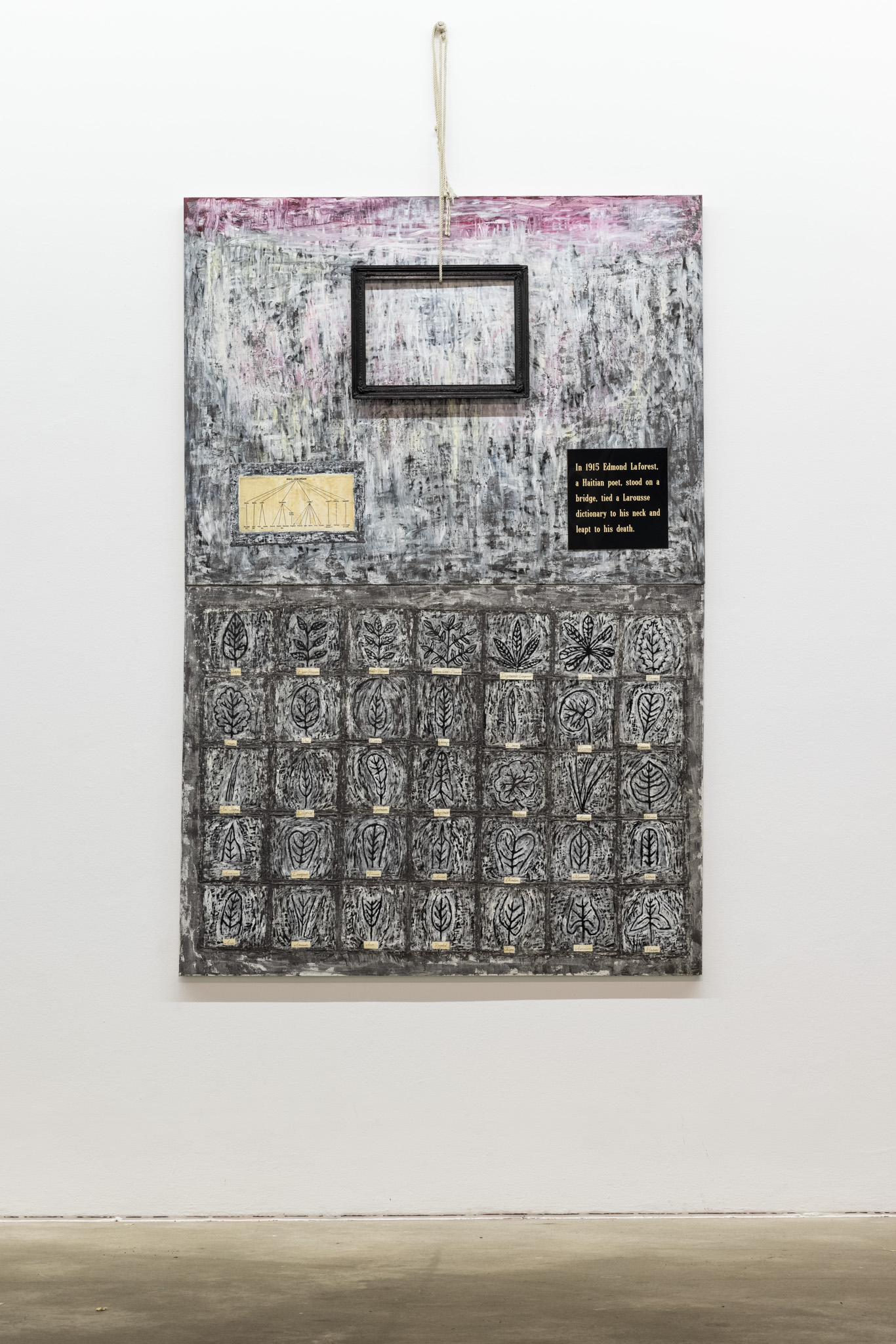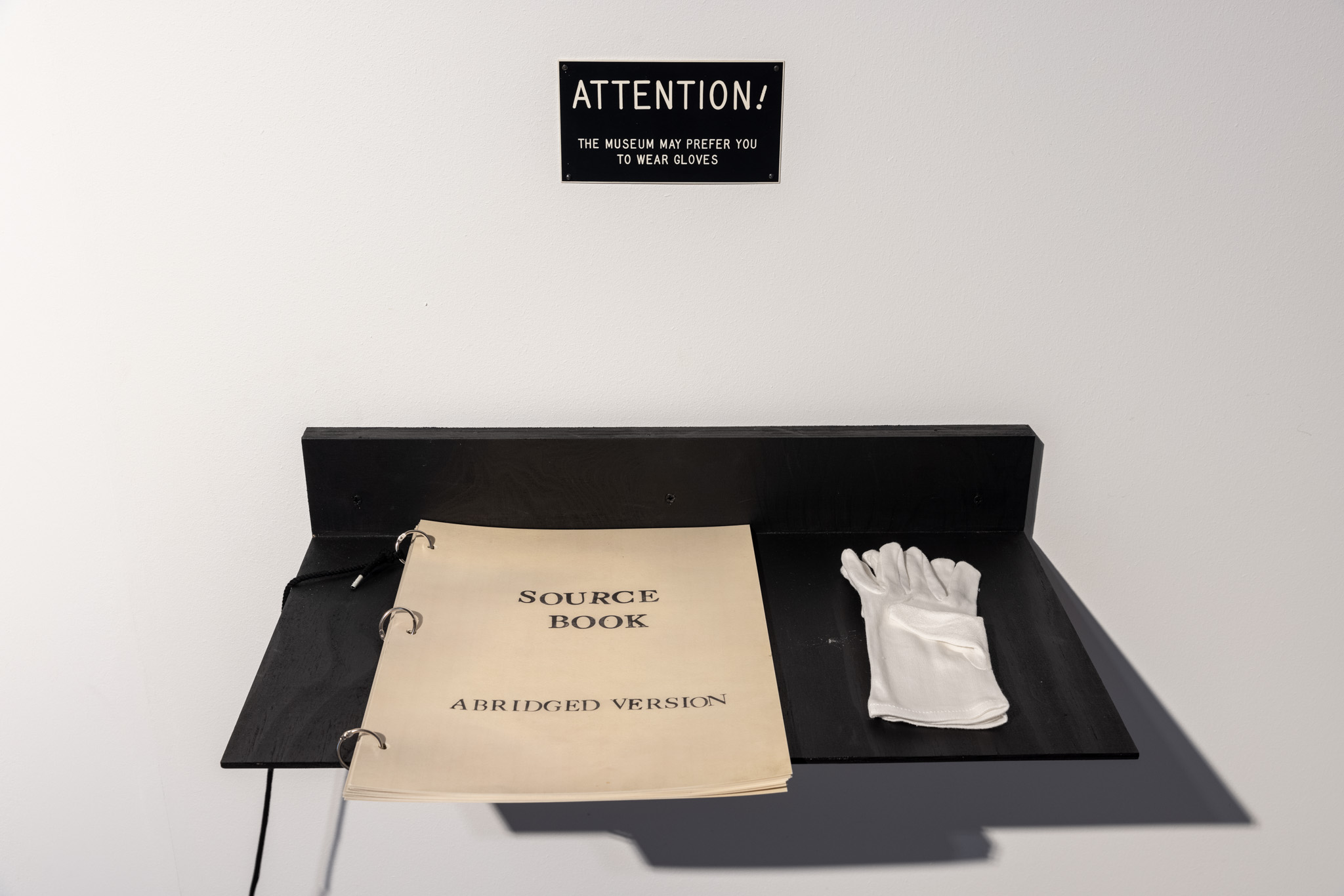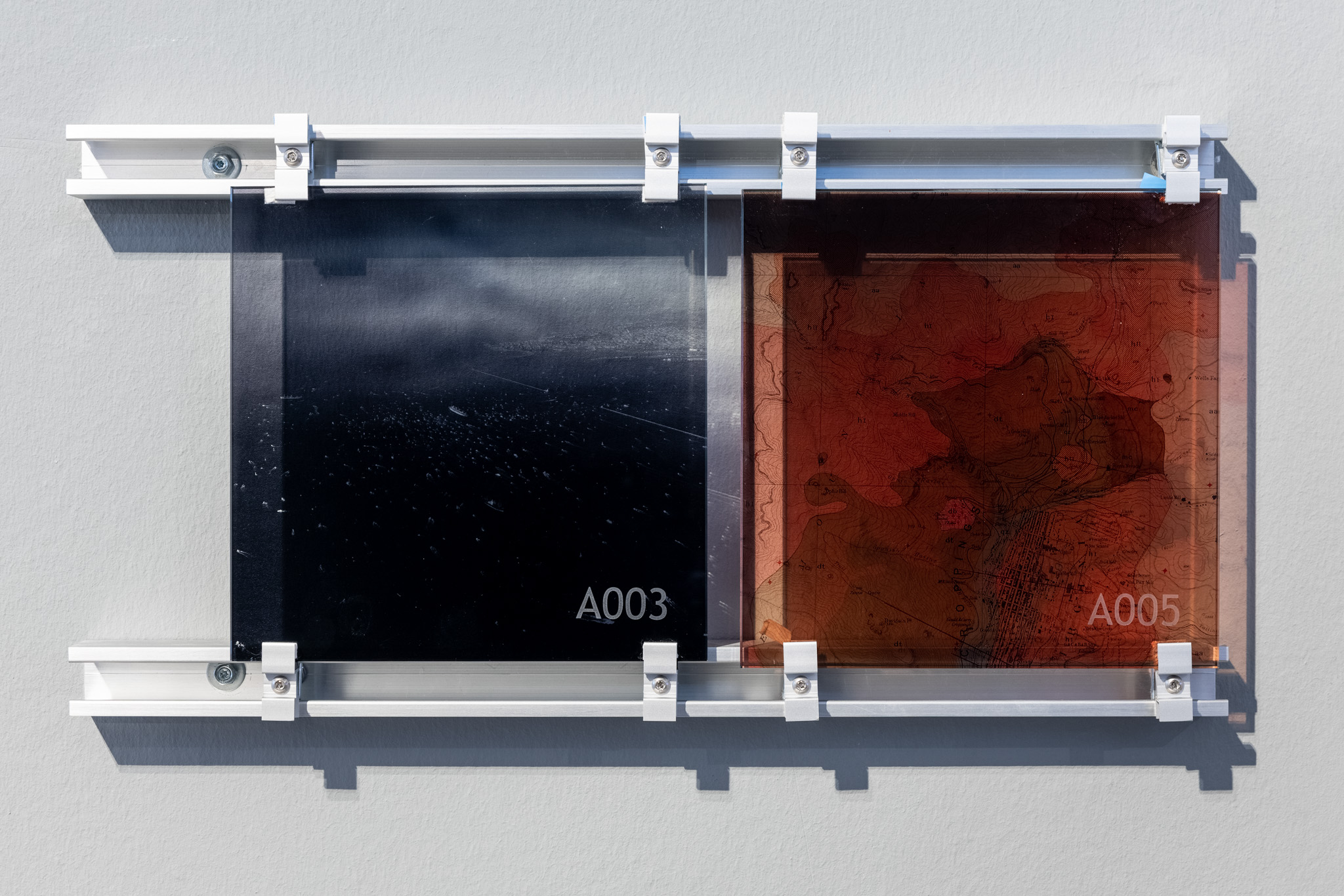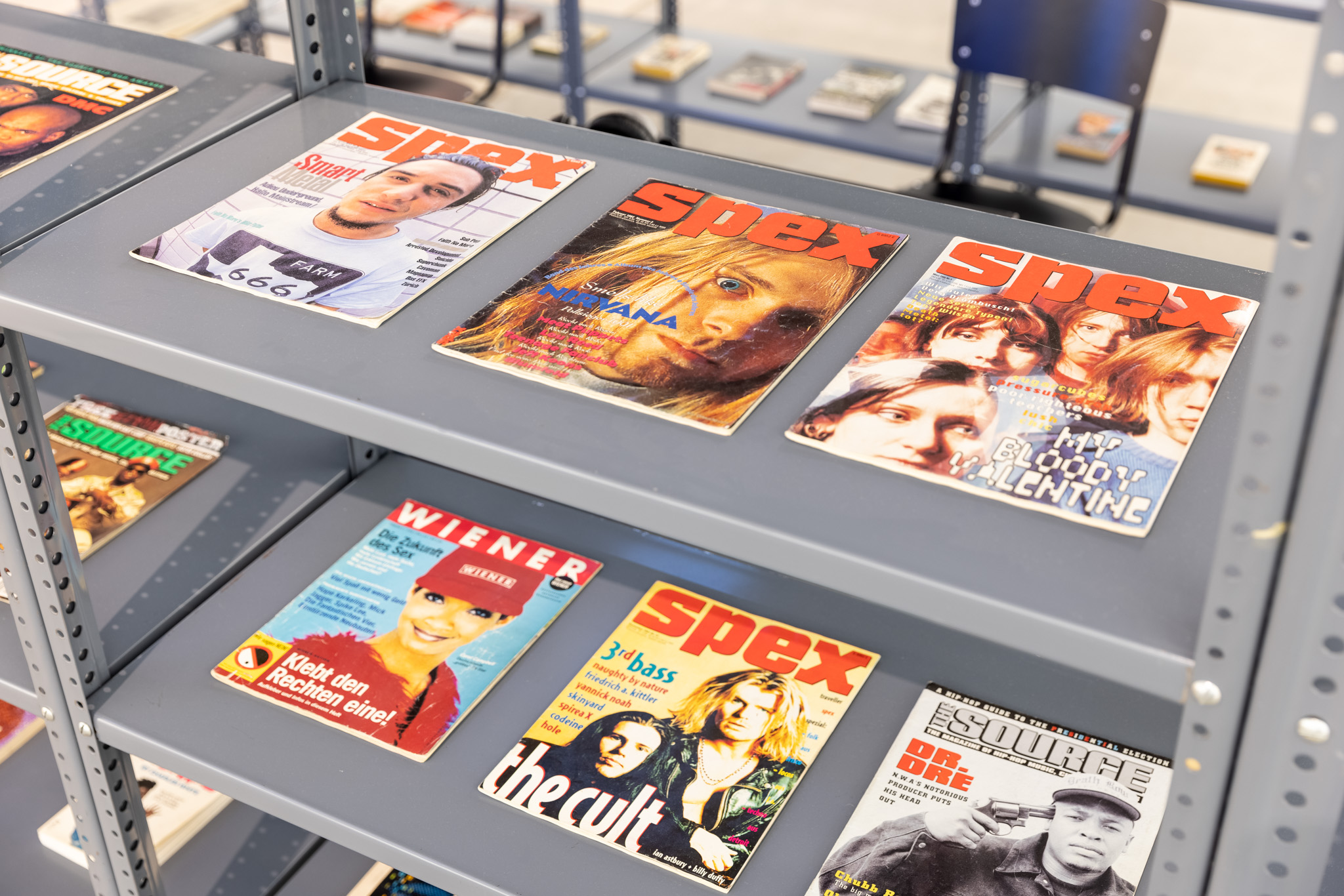Renée Green—Inevitable Distances
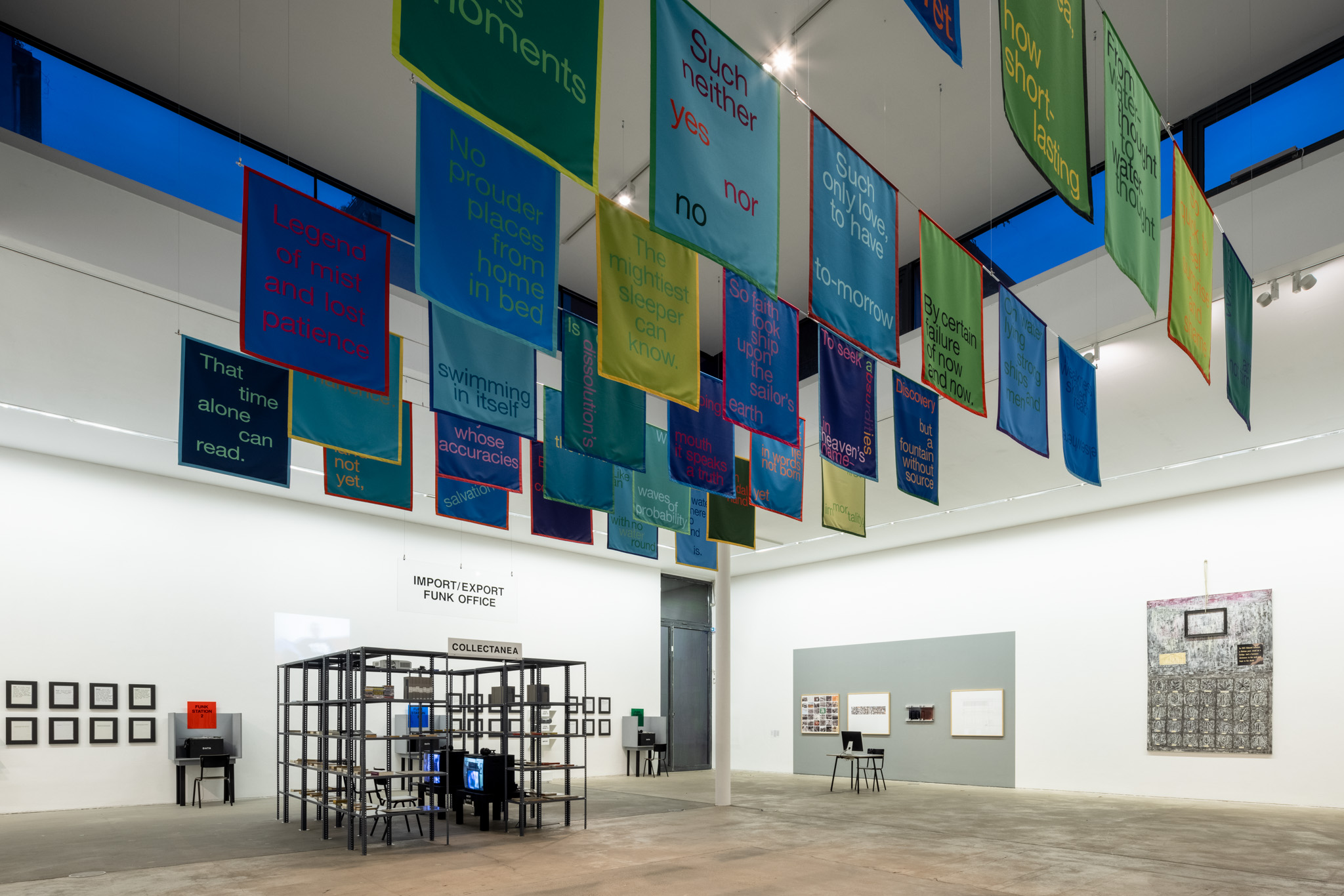
Renée Green, Inevitable Distances, 2021, Installation view [photo: Frank Sperling; contemporary Art, Berlin]
Share:
Inevitable Distances [October 23, 2021–January 9, 2022], Renée Green’s expansive exhibition spread across Kunst-Werke Berlin and daadgalerie, featured elements suggesting a retrospective: The works included span Green’s career from the 1980s to present, documentary material was on display, public programs were undertaken, and a catalog publication is forthcoming. More importantly, the exhibition(s) offered a singular view, an intimately situated perspective on Berlin’s cultural landscape in the 1990s. By that time Green, an African American artist, was a regular on the Berlin–Cologne–Vienna–New York circuit. Relentlessly moving between the US and Europe, she was embedded in a project-based economy as a frequent producer of site-specific work for art institutions and public spaces, a critical writer, and a nomadic artist-in-residence.
In 1993–1994, the German Academic Exchange Service’s (DAAD) residency program hosted Green in Berlin, leading to her exhibition miscellaneous at daadgalerie, expanded the next year as Certain Miscellanies at De Appel Foundation. Today’s daadgalerie, now in different quarters, reprised parts of that earlier show. A large installation of nearly 100 black-and-white photographs covered one wall of the exhibition space, showcasing Green’s navigation of different registers—ranging from a touristic view to scenes inside the artist’s temporary apartment—and her encounters with the city’s cultural landscape.
Such intimate accounts were put in dialogue with more recent works, such as Climates and Paradoxes (2005), a commission for Einstein Year, the centennial of the physicist’s “Miracle Year” of scientific breakthroughs. Green’s film revolves around traces of Einstein’s office at the German League for Human Rights and his summer house southwest of Berlin, blending scenes of interior and exterior architecture, leisure, and public space. Begin Again, Begin Again (2015), in turn, departs from Rudolph M. Schindler’s modernist architecture, such as the famous Schindler House in Los Angeles. In 1912, while living in Vienna, the architect authored a manifesto, Modern Architecture: A Program, in which he proposed the ideas that would come to be called “Space Architecture.” The manifesto is here presented as three letterpress prints and read aloud by a narrator in Green’s film, alongside imagery of the built environment and distorted nature.
Renée Green, Edmond Laforest, 1988, Installation view [photo: Frank Sperling; courtesy of Collection of Marguerite
Steed Hoffman, Dellas]
Other letterpress prints displayed in generous aluminum vitrines, including Selected Life Indexes Series (2015/2018), refer to W.E.B. DuBois, Einstein, Paul Robeson, Muriel Rukeyser, and Lou Harrison. Poet-activist Rukeyser’s words returned when directing one’s gaze toward the ceiling: There, Space Poem #5 (Years & Afters), a series of colorful banners from 2015, unfolded a dazzling web of references in Green’s practice, which is often concerned with the biographical and autobiographical, setting individual stories and memory parallel to history (and against it). The exhibition booklet circulated at daadgalerie acted less as a source of information or an ostensible “key” to the exhibition than as an artwork unto itself. Inside was Berlin Story (2001), a series of 80 color slides, further linking the show at daadgalerie to the one at Kunst-Werke, where the work was first shown during the 2nd Berlin Biennale.
Renée Green, Acknowledge Your Sources, 1988, Installation view [photo: Frank Sperling; courtesy of Bortolami Gallery, New York]
At Kunst-Werke around two dozen works across the artist’s practice were shown: from the collage Friday 14, 1981 (1981) to her colorful series of gouaches Metonymies (1984), from the mixed-media canvas Edmond Laforest (1988) to her interactive installation Acknowledge Your Sources (1989) and all the way through ED/HF (2017), a 33-minute homage to filmmaker Harun Farocki. Green’s sprawling installation Sites of Genealogy (1990) was initially produced during renovations at MoMA PS1. At Kunst-Werke, a remake of the work occupied the lower floor and expanded to the institution’s staircases and a top-floor gallery. Mise-en-scène (1991) and Commemorative Toile (1992–1993), two interrelated installations involving decorative toile fabric and France’s colonial empire, rendered palpable Green’s unique way of researching and narrating colonial violence, displacement, and migration.
Moving through Kunst-Werke’s ground-floor galleries and corridors, a semi-transparent curtain partially blocked the view. Behind it Space Poem #2 (Laura’s Words) (2009) hung from the ceiling of the hall, a large square room with fanlights. The banner rearranges words and phrases taken from a poem by Laura Riding Jackson. Green’s spatialized poems often inhabit typically neglected exhibition areas, sometimes flown above staircases and hallways, but at Kunst-Werke they were moved center stage. The poem was complemented by a vitrine with large-scale letterpress and digital prints, foregrounding Green’s inquiries into design, typography, and analog and digital printmaking techniques.
In Code: Survey (2006), a commission by the California Department of Transportation, 168 square panels relate information about public transport and travel. Originally installed on the walls of the agency’s café, the panels each feature a reference code, and through a website visitors could further engage in Green’s research.
Renée Green, Code: Survey [Prototype], 2006, Installation view [photo: Frank Sperling; courtesy of the artist, and Free Agent Media; Bortolami Gallery, New York; Galerie Nagel Draxler, Berlin/Cologne/Munich]
Import/Export Funk Office (1992/1993) consists of heavy-duty shelving, assembled to form a room-like structure at the center of the exhibition space. Inside are two monitors with headphones and chairs, surrounded by shelves filled with magazines, books, records, and ephemera relating to African American diasporic (sub)culture and its reception in Germany, further detailing the artist’s exchange with local cultural producers. This was combined with music-listening corners (“Funk Stations”) and a series of plates translating American slang into German (“Lexicon”). In 1996 Green produced a CD-ROM version and addendum to the project; a way to grapple with the first wave of digitization. As I browsed the material of Code Survey and Import/Export it became evident that questions of citation, (cross-)referencing, and indexing are essential to Green’s sprawling practice.
Renée Green, Import/Export Funk Office, 1992-1993, Installation detail [photo: Frank Sperling; courtesy Museum of Contemporary Art, Los Angeles, Gift of Gaby and Wilhelm Schürmann]
Throughout the exhibitions at daadgalerie and Kunst-Werke, the artist’s keen interest in cultural exchange, questions of translation, and sociologically- and anthropologically-informed research unfolded. Inevitable Distances coincides with a surging interest in the 1990s, especially in what has been dubbed “second wave” institutional critique, from Andrea Fraser to Maria Eichhorn. Taken together, the shows offered both a singular account of the German capital’s transformations since the fall of the Berlin Wall and a comprehensive quasi-retrospective of Green as a prolific cultural producer.
Christoph Chwatal is an art historian and critic based in Berlin. He studied art history in Basel, Berlin, and Vienna. His academic writing has appeared in journals including Stedelijk Studies, kritische berichte, and Third Text. He is a regular contributor to publications such as Art Papers and springerin, among others.
